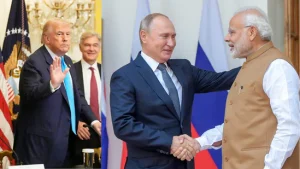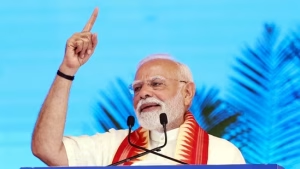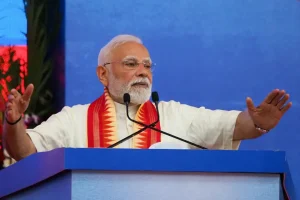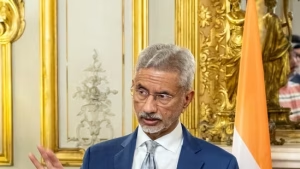Washington D.C. – The United States has formally issued a critical notice outlining the implementation of 50 percent tariffs on Indian products, marking a significant escalation in bilateral trade tensions. The US Tariff Deadline Notice To India published by the Department of Homeland Security confirms President Donald Trump’s earlier announcement, with the punitive measures set to take effect on August 27, 2025.
Department of Homeland Security Confirms Implementation

The official US Tariff Deadline Notice To India represents the latest signal that the White House intends to proceed with heightened levies despite ongoing diplomatic efforts. The comprehensive notice specifies that increased tariffs will affect Indian products “entered for consumption, or withdrawn from warehouse for consumption, on or after 12:01 AM eastern daylight time on August 27, 2025.”
This formal documentation transforms Trump’s earlier threats into concrete policy action, with the US Tariff Deadline Notice To India providing legal framework for the unprecedented trade measures targeting one of America’s key strategic partners in the Indo-Pacific region.
Strategic Context Behind Tariff Implementation


The US Tariff Deadline Notice To India emerges as efforts to broker a peace deal between Russia and Ukraine appear to be stalling. The timing suggests that Washington views economic pressure on countries maintaining energy ties with Moscow as crucial to forcing Russian President Vladimir Putin to the negotiating table.
The notice reflects America’s broader strategy of using secondary sanctions and trade measures to isolate Russia’s economy. US Tariff Deadline Notice To India serves as a warning to other nations continuing energy trade with Moscow despite Western sanctions and diplomatic pressure.
Tariff Structure and Economic Impact
The formal US Tariff Deadline Notice To India confirms the doubling of existing tariffs from 25 percent to 50 percent, specifically targeting India’s continued purchases of Russian oil. This represents one of the most severe trade measures imposed on India in recent decades, potentially affecting billions of dollars in bilateral commerce.
The punitive measures outlined in the US Tariff Deadline Notice To India could significantly impact various Indian export sectors, from textiles and pharmaceuticals to information technology services and agricultural products, creating widespread economic disruption across multiple industries.
India’s Defiant Response Strategy

Prime Minister Narendra Modi‘s response to the US Tariff Deadline Notice To India demonstrates unwavering commitment to protecting domestic interests despite international pressure. Speaking in Ahmedabad, Modi declared that India would not compromise on the interests of farmers and small businesses, emphasizing his government’s resolve to withstand external coercion.
Modi’s statement that “the pressure on us may increase, but we will bear it all” directly addresses the US Tariff Deadline Notice To India while reinforcing his administration’s determination to maintain strategic autonomy in energy and trade decisions.
Historical and Spiritual Justification


The Prime Minister’s invocation of “Chakradhaari” Lord Krishna and “Charkhadhari” Mahatma Gandhi in response to the US Tariff Deadline Notice To India provides historical and spiritual context to India’s resistance strategy. This rhetorical approach combines religious symbolism with independence movement references to justify contemporary policy positions.
Modi’s choice to frame the US Tariff Deadline Notice To India within broader historical narratives of resistance and self-reliance resonates with domestic audiences while signaling India’s refusal to capitulate to external pressure.
Also Read: PM Modi Tariff Stance In Ahmedabad: Strong Response To Crushing US Trade Pressure
External Affairs Ministry’s Strategic Defense

External Affairs Minister S. Jaishankar’s robust defense of India’s energy choices provides diplomatic context for responding to the US Tariff Deadline Notice To India. His assertion that New Delhi would continue making decisions based on national interest and strategic autonomy directly challenges American attempts to influence Indian energy policy.
Jaishankar’s argument that the US Tariff Deadline Notice To India wrongly frames the situation as an “oil dispute” attempts to reposition the conflict as a matter of sovereign decision-making rather than compliance with American sanctions policy.
Comparative Analysis and Double Standards
The External Affairs Minister’s criticism highlights apparent inconsistencies in American policy implementation. His observation that larger importers such as China and European nations have not faced similar pressure despite continuing Russian energy purchases underscores the selective nature of the US Tariff Deadline Notice To India.
This comparative analysis strengthens India’s position that the US Tariff Deadline Notice To India represents discriminatory treatment rather than consistent application of principled sanctions policy.
Economic Sovereignty Versus Alliance Pressure
The US Tariff Deadline Notice To India creates a fundamental tension between economic sovereignty and strategic partnership obligations. India’s response demonstrates the complex balance required between maintaining beneficial economic relationships and preserving strategic autonomy in an increasingly multipolar world.
The formal notice forces India to choose between immediate economic pain and long-term strategic independence, with the US Tariff Deadline Notice To India serving as a test of the country’s resolve to resist external economic coercion.
Conclusion
The Department of Homeland Security’s formal notice confirms the escalation of US-India trade tensions to unprecedented levels. The US Tariff Deadline Notice To India represents more than trade policy; it embodies broader questions about sovereignty, strategic partnerships, and the limits of economic pressure in international relations. The August 27 deadline will test both countries’ commitment to their respective positions in this high-stakes diplomatic and economic confrontation.

